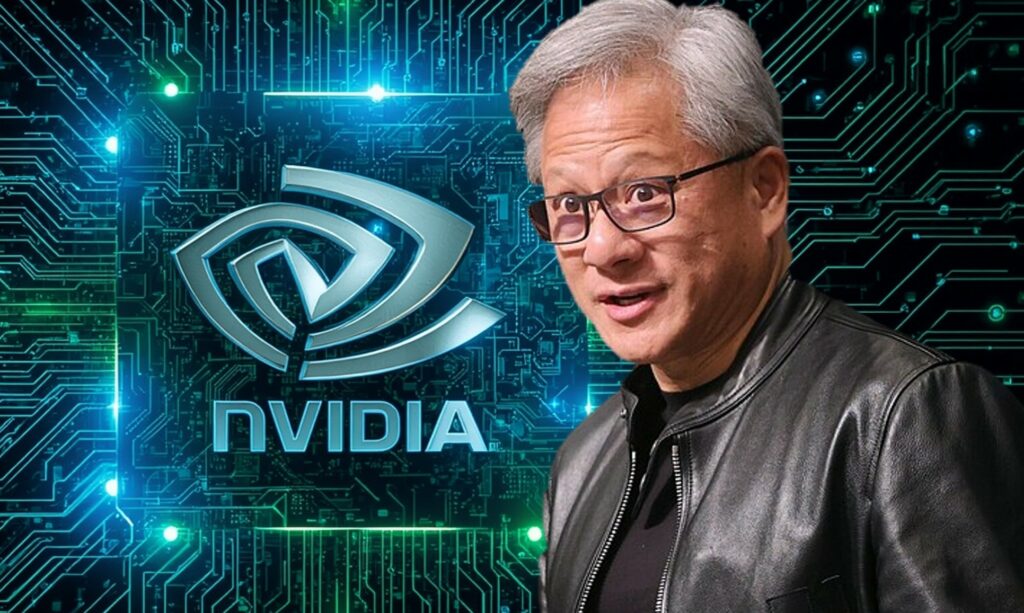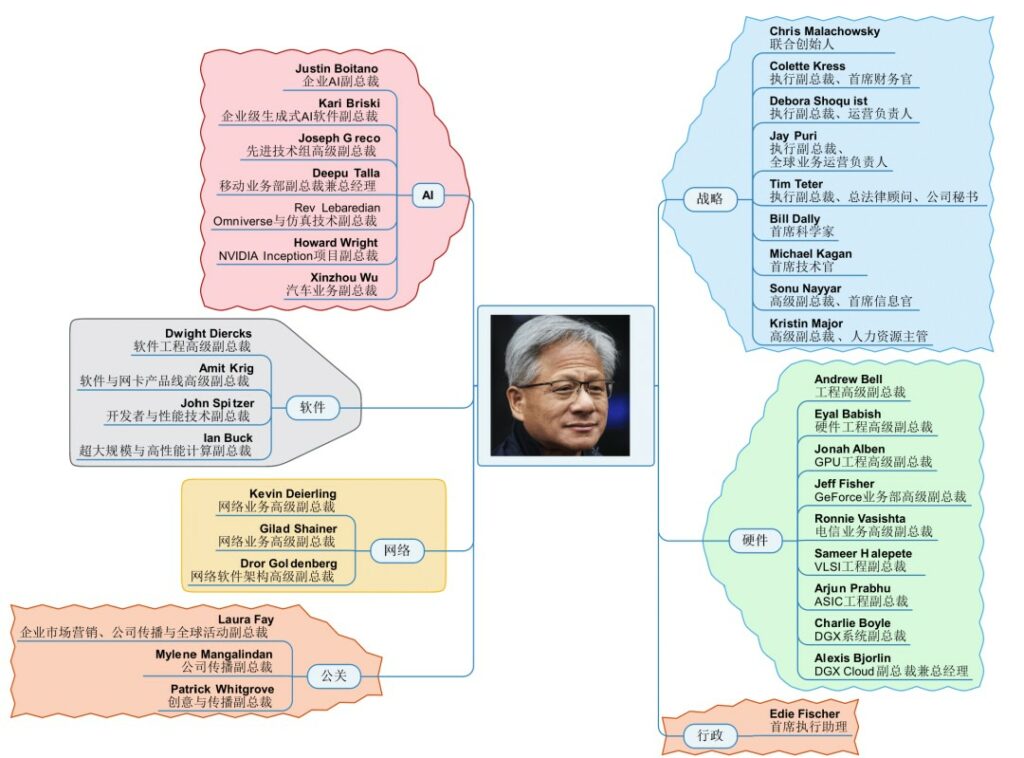
NVIDIA CEO Jen-Hsun Huang now directly oversees 36 employees across seven key areas: strategy, hardware, software, artificial intelligence, public relations, networking, and executive assistants. This represents a significant shift from the 55 employees reported in March 2024.
Nine executives work in the hardware sector, seven in artificial intelligence and advanced technologies, and three in public relations. Among the key names are Jonah Alben (Senior Vice President of GPU Engineering), Dwight Diercks (Executive Vice President of Software), Bill Dally (Chief Scientist), and Xinzhou Wu (Vice President of Automotive).
Meanwhile, NVIDIA’s total employee count grew 21.6% in a single year, reaching 36,000. This expansion signals a potential transition from a horizontal to a more vertical organizational model.

Despite the rise of artificial intelligence, Huang continues to focus on hardware, the company’s historical pillar. Divisions reporting directly to the CEO include GPUs, telecommunications, and DGX systems . At the same time, emerging technologies—including AI, embodied intelligence, and autonomous driving —are becoming NVIDIA’s second strategic pillar.
Leading this sector is Xinzhou Wu, a former executive at Qualcomm and XPeng Motors, now head of the Automotive division. Under his leadership, NVIDIA’s automotive revenues nearly doubled, from $281 million to $567 million between fiscal years 2024 and 2025.
Managing such a large number of direct reports is uncommon among tech CEOs. Elon Musk, for example, has 19 direct reports at Tesla and only five at the startup xAI. However, Huang has always advocated a horizontal model, based on transparency and the rapid flow of information.
The manager receives thousands of emails from employees every week—about 20,000 —and responds to many of them personally. This direct communication, which avoids one-on-one meetings, has allowed Huang to maintain a clear vision of projects and the market.
However, as the workforce expanded, this structure proved increasingly complex to maintain. The number of direct reports decreased from 55 to 36, a sign of the organization’s progressive verticalization.
In 2024, NVIDIA reported net income of $29.5 billion, a 600% year-over-year increase. In the first three months of 2025, profit had already reached $14.8 billion, a 628% increase from the previous year.
This unprecedented growth has also led to a workforce expansion, the largest in the last 16 years. But an organization of this size requires a balance between speed of decision-making and information flow management.
Jensen Huang is known for his rigorous leadership style. There are no gyms, break rooms, or recreational spaces in NVIDIA’s offices: everything is geared toward efficiency . Long hours and constant deadlines are considered an integral part of the company culture.
Despite his demanding nature, Huang is known for his loyalty to his employees: he rarely fires them. Even when faced with serious technical errors —such as in 2009, when a design flaw cost him $200 million —he preferred to reassign staff rather than dismiss them.
As one NVIDIA executive put it: “He might scold you, yell at you, or even insult you, but he will never fire you.” Even when the business environment is unfavorable and a department must be closed, “he will do his best to reassign employees to other positions that need them.”
His philosophy is summed up in an oft-quoted phrase within the company: “Second place is just a first place loser.”
With this mindset, Huang transformed NVIDIA from a graphics card manufacturer into a global powerhouse in artificial intelligence and advanced computing.
In recent years, NVIDIA has not only dominated the GPU market but has also progressively gained a central role in scientific computing and supercomputers . Its processors now power the world’s most advanced systems, used for climate simulation, molecular modeling, and clean energy research. This expansion has transformed the company into a key infrastructure for global research and innovation.
With the introduction of the Blackwell architecture, announced in 2025, NVIDIA has made another generational leap. The new chips, designed to combine artificial intelligence and classical computing, promise unprecedented performance with dramatically reduced power consumption. The company has already announced partnerships with universities and research centers to integrate Blackwell into next-generation supercomputers.
This strategy aims to strengthen NVIDIA’s dominance in the data center segment, where the company currently controls over 80% of the AI GPU market. The ability to combine computational power and energy sustainability will be key to its competitive advantage in the coming decade.
Behind NVIDIA’s technological success lies a unique organizational culture, shaped by Jensen Huang’s charisma and discipline . The company is distinguished by a radically meritocratic approach , where speed of execution and attention to detail matter more than hierarchies. There are no luxurious offices or superfluous perks: everything is geared towards excellence and innovation.
The internal motto, “No excuses, just results,” sums up Huang’s philosophy. Every project is treated as a critical mission and every mistake as an opportunity for improvement . This mentality has allowed the company to overcome difficult times, such as the collapse of the cryptocurrency market or the geopolitical challenges related to chip exports to China.
At the same time, NVIDIA maintains a bond of loyalty with its longtime collaborators: many of its top managers have worked alongside Huang for over twenty years. In an industry with high turnover, this internal continuity is considered one of the keys to its enduring success.
Follow us on Google News to receive daily updates on cybersecurity. Contact us if you would like to report news, insights or content for publication.
